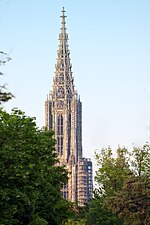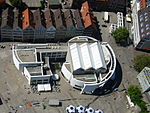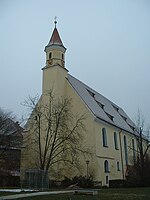Museum Ulm

The Museum Ulm (Museum der Stadt Ulm), founded in 1924, is a museum for art, archeology, urban and cultural history in Ulm, Germany.Exhibits range from prehistoric and early archaeological finds of the Ulm region (including the lion-man statuette) to Late (International) Gothic and Renaissance paintings and sculptures made in Ulm and Upper Swabia. Collections of 16th- to 19th-century artisan works by Ulm's handicraft guilds are also presented. Conservator and university professor Julius Baum became the museum’s founding director and its first art historian on 1 April 1924. According to his successor Erwin Treu, "this started the real history" as "an institute emerged from a junk room".
Excerpt from the Wikipedia article Museum Ulm (License: CC BY-SA 3.0, Authors, Images).Museum Ulm
Schelergasse, Ulm Mitte
Geographical coordinates (GPS) Address Nearby Places Show on map
Geographical coordinates (GPS)
| Latitude | Longitude |
|---|---|
| N 48.396944444444 ° | E 9.9947222222222 ° |
Address
Schelergasse 2
89073 Ulm, Mitte
Baden-Württemberg, Germany
Open on Google Maps








